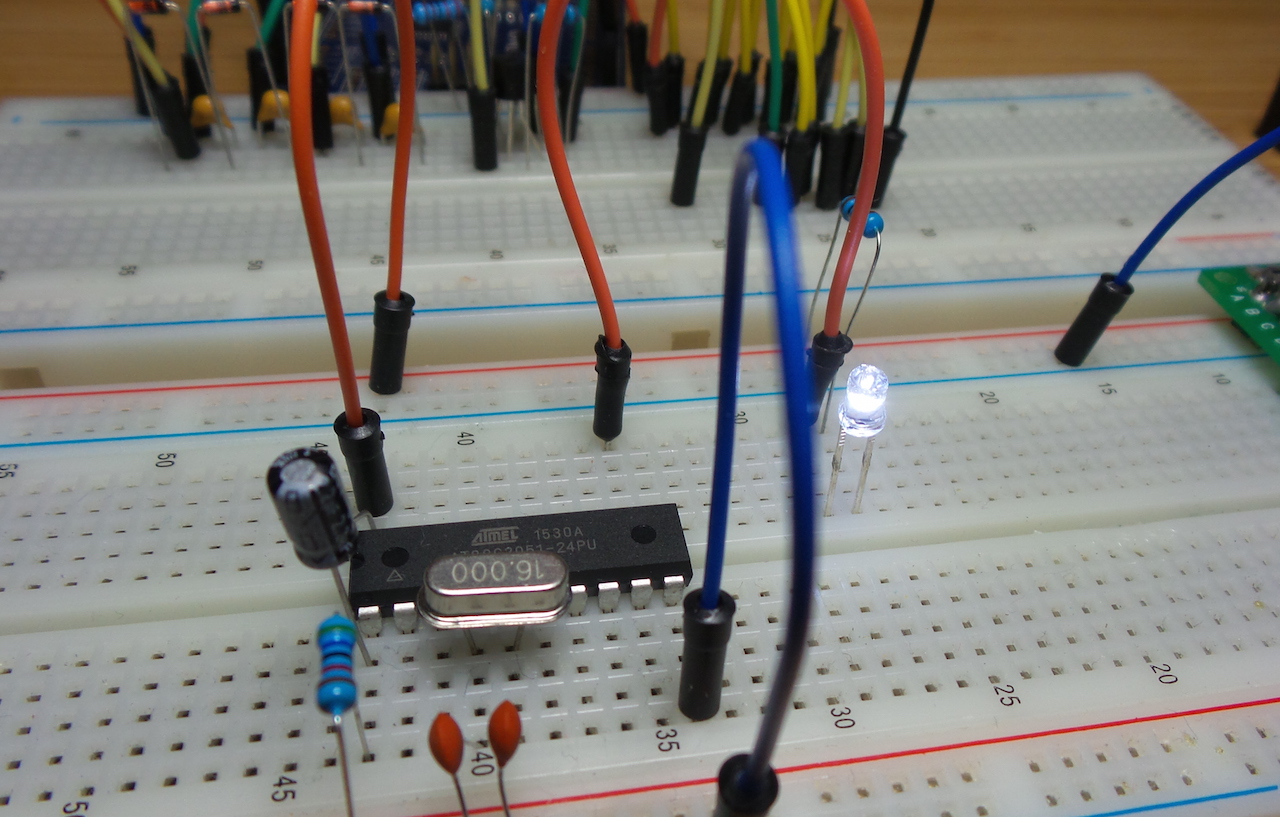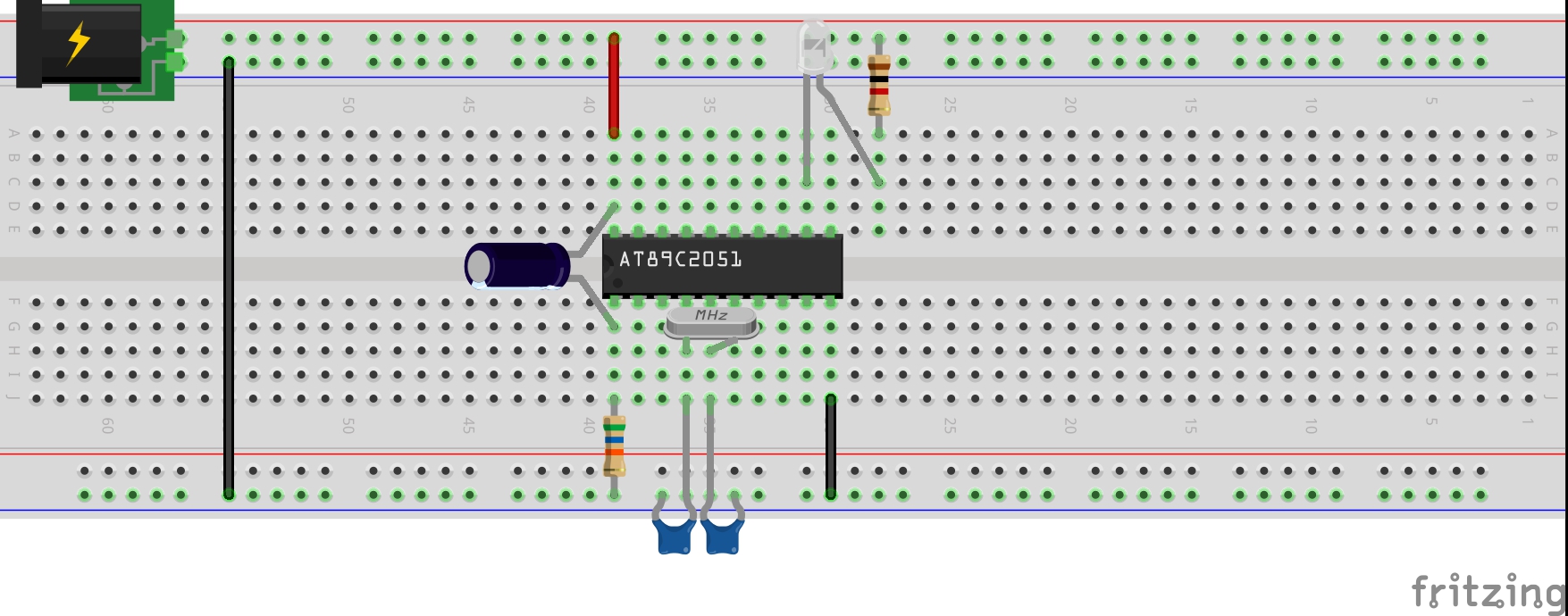#395 AT89C2051 Blinky
Simplest LED blinky program in C for the AT89C2051(8051/MCS51) microprocessor, built with the SDCC open-source toolchain on macOS. Originally tested with Intel-based macOS, but now updated for Apple Silicon.

Here’s a quick demo..
Notes
The main purpose of this program is simply to have something for testing the LEAP#394 AT89C2051 Programmer, and also my first trial of SDCC - Small Device C Compiler.
It is almost but not quite the simplest LED blinky program possible. It blinks an LED on P1_0, using a do-nothing loop to approximate 1Hz cycle time.
Installing SDCC
SDCC can be compiled from source or installed with a range of pre-compiled distributions available for Linux, Mac and Windows.
I previously installed SDCC using a pre-compiled distribution for macOS, specifically this version, but that was when I was still using an Intel-based machine.
I now run macOS on Apple Silicon (M3), and it seems there are no pre-compiled distributions for this platform. Can it be compiled from source? Luckily it seems the hard work has already been done - there is a brew formula that is Apple Silicon-compatible:
$ brew install sdcc
...
==> Pouring sdcc--4.5.0.arm64_sequoia.bottle.tar.gz
🍺 /opt/homebrew/Cellar/sdcc/4.5.0: 1,942 files, 146.1MB
==> Running `brew cleanup sdcc`...
...
==> Caveats
Emacs Lisp files have been installed to:
/opt/homebrew/share/emacs/site-lisp/sdcc
$ which sdcc
/opt/homebrew/bin/sdcc
Homebrew appears to setup the environment sufficiently,
but in other circumstances it may be necessary to set the SDCC_HOME environment variable so the compiler can find all its bits and pieces (like library header files).
export SDCC_HOME=./sdcc
export PATH=$PATH:${SDCC_HOME}/bin
Compiling
See the Makefile for the couple of simple instructions that are used. It builds simply like this:
$ make
sdcc -mmcs51 --code-size 2048 Blinky.c -o Blinky.ihx
packihx Blinky.ihx > Blinky.hex
packihx: read 16 lines, wrote 21: OK.
I’ve checked-in all the products of the compilation for study purposes:
| File | Description |
|---|---|
| Blinky.asm | Assembler source file created by the compiler |
| Blinky.c | C source file |
| Blinky.hex | Optional packed hex file created by packihx |
| Blinky.ihx | The load module in Intel hex format |
| Blinky.lk | linker options (I think) |
| Blinky.lst | Assembler listing file created by the Assembler |
| Blinky.map | The memory map for the load module, created by the Linker |
| Blinky.mem | A file with a summary of the memory usage |
| Blinky.rel | Object file created by the assembler, input to Linkage editor |
| Blinky.rst | Assembler listing file updated with link edit information, created by linkage editor |
| Blinky.sym | Symbol listing for the sourcefile, created by the assembler |
Controlling the RST line
I haven’t found the definitive specification for this yet - but I quickly learned that you can’t just ground the RST pin and have the chip run!
The AT89C2051 data sheet actually specifies a RST pull-down of 50kΩ-300kΩ, but it seems to be important to also couple to VCC with a capacitor of say 2.2µF or more. Googling for 8051 circuit schematics, I see a common combination is 8.2kΩ pull-down and 2.2µF or 10µF to VCC.
Construction



Credits and References
- AT89C2051 product info and datasheet
- SDCC - Small Device C Compiler
- LEAP#394 AT89C2051 Programmer
- ..as mentioned on my blog

